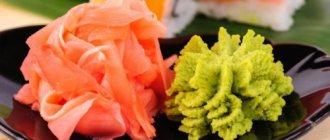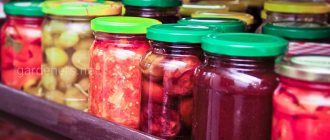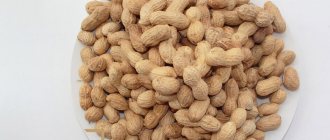General storage recommendations
Dried apricots (has many names, such as kaisa, apricot, etc.) even after it is dried, contain a lot of water.
If you buy it at the market or supermarket, you will notice that it is not too dry, but rather wilted. Manufacturers believe that in this condition it has more weight and better presentation. But storing such a product is also more difficult. Dried apricots should be stored in a dark, well-ventilated place with little humidity. The room temperature should not exceed +15°C - +20°C, and air humidity should be kept at 30-40%. In such conditions, you can save this dried fruit for up to 1.5 years.
Benefits and application
This dried fruit is indispensable for heart patients: it contains potassium, which is necessary for the optimal functioning of the heart muscle, prevents the clogging of blood vessels and helps normalize blood circulation in the vessels. A moderate amount of dried apricots will not harm people with diabetes. Dried apricots normalize the functioning of the gastrointestinal tract, relieve constipation, and strengthen the immune system.
The predominant beneficial substances in dried apricots are beta-carotene, which has a positive effect on vision, as well as vitamins A, E, C, K and group B. It contains minerals such as magnesium, calcium, iron and potassium. Magnesium is useful for anemia. Potassium removes excess fluid from the body, which helps lower blood pressure. Dried apricots help rejuvenate cells and skin, strengthen hair and nails.
There are two ways to dry apricots, with and without pits. Depending on this, the result is different products, which are sometimes confused with each other - dried apricots and apricots. The apricot is dried together with the pit, and the dried apricots are dried without it.
Dried apricots are usually prepared industrially, so apricots, which are prepared exclusively by natural drying, are valued much higher. Dried apricots are used in diets. Dried apricots are a healthy alternative to the usual sweets. It can be an excellent gift, especially when mixed with other dried fruits (prunes, raisins, etc.) or with nuts. It is used as a filling, an ingredient in meat and dairy dishes. Fruit drinks and compotes are made from dried apricots.
When choosing dried apricots, it is better to look for one that has been produced by natural drying. The largest selection exists on the market. It is easier to check the quality of loose products than the quality of packaged goods. When buying loose goods, you can evaluate the appearance of the fruits and check their hardness.
How to choose
There are two types of dried apricots: dried, which is most often found in stores, and completely dried (usually prepared independently). When choosing, you should pay attention to the quality of the product:
- Type and color. The correct dried apricots should be opaque, a uniform matte yellow or brown shade. These signs indicate the absence of chemicals during drying. Transparency and bright color indicate otherwise.
- Size. The larger the dried fruit, the more pronounced its taste and the higher the content of beneficial microelements.
- State. If juice comes out when you press on a dried apricot, this indicates that the quality of the product is not very good. It shouldn't be sticky.
- Smell. Good dried apricots are characterized by a sweetish apricot smell; there are no notes of soot in them.
- Taste qualities. Dried apricots should taste sweet with a slight sourness, without any impurities.
Shelf life of dried apricots
The exact shelf life of dried apricots is determined depending on the conditions chosen for storage. It will remain edible for as long as possible in the freezer. The frozen product is safe and healthy for 1.5 years. The only thing that consumers don’t like is the change in taste and texture after defrosting, which is why this method is used quite rarely.
In the refrigerator, provided it is placed away from moisture, it will last no more than a year. This period is relative: the product may deteriorate earlier under the influence of unfavorable factors. The taste and benefits of dried fruit can be preserved as much as possible by placing it in a dry, dark and cool place. There it will lie without loss of properties for six months.
Advice!
Keeping a large package of dried apricots in the kitchen cabinet is a bad idea. There the fruit will become unusable in 1 month.
Deadlines and possible problems
The shelf life of dried fruits at home varies depending on the conditions and packaging. But, subject to the correct temperature conditions and in a suitable container, dried apricots can be stored:
- Just on the shelf or on the table - 30 days.
- In a dark, cool place - 6 months.
- In the refrigerator - 10 months.
- In the freezer - up to 1.5 years.
However, despite the firm belief that you have packed your dried fruits correctly, you still need to dig into your hamster supplies once a month. You need to check not how much your household has eaten in your absence, but the presence of mold or bugs.
Yes, yes, not only people love to eat aromatic dried fruits. With high air humidity, the ubiquitous mold tends to bloom in lush clusters on your supplies.
If you find at least one spoiled fruit, you will have to throw away the entire contents of the container. It's a pity, but mold spores have already affected the rest of the fruit. They're just not visible yet. Don't risk your health, throw away without regret.
Advice. To avoid global damage to dried apricots, store them in small containers.
Bugs or cereal moths will also never refuse a tasty treat. But, unlike mold, you can try to save the remaining supplies. Select unaffected apricots, put them in the freezer for a day, then pour boiling water for an hour, then rinse thoroughly. It is better not to store such dried apricots again.
Advice. If, after all the manipulations, you are afraid to eat such dried fruits, then cook a compote from them, use them for baking, or make a sauce for meat.
how to store dried apples
White plaque, what is it?
The white coating on dried apricots varies. Sometimes this is bleed-through sugar - it can be easily distinguished by barely noticeable whitish stripes that can be cleaned off with a fingernail. It is often noticeable already on the market counter. It can also be colonies of mold - it can be distinguished simply by its specific appearance (usually it has a gray or greenish tint) and smell. However, mold is not always visible on surfaces; its colonies can be located between the cotyledons. A spoiled product always gives off a musty, pungent odor. The worst thing is that fruits are not protected from such troubles anywhere, even on the refrigerator shelf. This happens due to leaky containers and non-compliance with storage conditions.
If mold appears on at least one fruit, the entire package should be thrown away. It affected the entire contents of the package; it was simply not immediately visible everywhere with the naked eye. Further storage of spoiled fruit is pointless.
To wash or not to wash – that is the question
Dried apricots are afraid of moisture, so housewives are faced with this question.
Before storing in a kitchen cabinet, refrigerator or freezer, dry berries do not need to be washed.
If dried apricots are stored at home at room temperature, then they are washed or soaked to soften them immediately before use. The same thing happens when stored in the refrigerator.
If the product is waiting in the freezer, it is also defrosted in warm water and washed before use.
Negatively influencing factors
When storing it, it is important to exclude negatively influencing factors . The following circumstances deteriorate the quality of stored products:
- Wet environment.
- High air temperature (dried apricots spoil especially quickly).
- Exposure to solar ultraviolet radiation.
- Storage near food products with a pungent odor.
- Neighborhood (when stored in the freezer) with fish and meat preparations.
Treatment before storage
The natural appearance of dried apricot is not very attractive. It has a brownish color and a wrinkled matte surface. As for manufacturers, they give dried apricots a marketable appearance and increase their shelf life with the help of various treatments and preservatives.
To make dried apricots look more presentable and be stored for a long time, in industrial conditions they are treated with sulfur dioxide (E220 on the packaging). It is this additive that allows you to give it a bright orange color that attracts buyers so much.
Some manufacturers hold dried apricots over gasoline vapor to preserve their color. It is clear that such a product will have a specific smell. The dried fruit is also soaked in dyes and glycerin to add brightness and shine.
Of course, apricots dried on their own contain more useful substances than those that have been processed. But they are more susceptible to moisture and destruction by insects if dried apricots are stored without following the rules.
Methods for drying fruit
To preserve the maximum of microelements and vitamins in apricots, which are so lacking in winter, the berries are sorted and sent to a gas oven or special drying. In the southern regions, where it is hot and there are no clouds in the sky, the fruits dry in the sun in 4 or 5 days.
Electric grill
Companies from many countries produce various types of household appliances; each device is accompanied by a detailed description. Fruits dry evenly in an electric grill. The apricots are sorted, pits are removed, divided into 2 parts and placed on a wire rack so that the cut halves are not connected to each other.
The berries are dried for three hours, setting the temperature to 50 ° C, after which they increase it by another 10 degrees. The fruits darken during the drying process; they will not change color if, before sending them to the electric grill, they are dipped in a solution prepared from 5 g of citric acid or juice and a liter of water. Apricots are dried after the liquid has drained. You can dry the berries well in 12 hours.
Gas oven
In the absence of special electrical equipment or a grill, both urban and rural residents can use a regular stove with a built-in gas oven, but you need to constantly monitor how the fruit is dried by opening the door slightly. The temperature in the oven must be at least 60 °C, which is reduced only at the end of the process.
Dried berries turn out sweet and tasty if you sprinkle them with sugar overnight in a ratio of 3 to 1:
- The mass is transferred to a colander and left there.
- While the liquid is draining, cook the syrup. To prepare this product, use 300 ml of water and 350 g of sugar.
- Apricots are placed in the hot solution and boiled for up to 10 minutes. To allow the cooled halves to dry, leave them in a colander.
- The fruits are placed on a baking sheet in the oven, where they are dried at 50 degrees for about three hours, at the end of the process the temperature is reduced to 35 ° C and dried for the same amount of time, turning the apricots over and over again.
See also
Description of the Sardonyx apricot variety, fruiting characteristics and cultivation characteristicsRead
Dried fruits should swell in water and not release juice when pressed. Dried apricots are soft to the touch and do not crack when tapped.
On open air
If the weather is hot and clear, the berries are aired for 4 hours, then laid out on a metal grid, which is placed in the sun. After 4 days, the fruit is transferred to the shade, where the apricots need to be dried until they acquire an orange color.
To preserve more vitamins, the seeds are not removed from the fruits; the berries are dried in the hot rays of the sun for a week, then the apricots are dried in the shade.
Some useful tips
- In the refrigerator, it is correct to keep dried apricots on a separate shelf in the door. The temperature there is a little higher, and there is no need to empty one of the main shelves to avoid proximity to other products.
- In the freezer, berries should also be kept away from other frozen foods. Especially from fish and meat.
- Before storing apricots, you need to sort them out and remove any wrinkled or damaged fruits.
- The more unpresentable the dried apricots, the more useful they are. When dried naturally, the fruits wrinkle and darken. When choosing such berries, you can be sure that they have not been glossed with food chemicals.
Storage at room temperature
Dried fruits are usually kept in a kitchen cabinet that is located away from heat sources, or in the pantry. It is undesirable for them to be exposed to sunlight. It is only permissible to dry apricots in the sun, and the finished product cannot be exposed to it.
The container in which dried fruits are supposed to be kept must close well. For these purposes, glass jars and plastic food containers are used. If you keep dried apricots in linen bags, they will dry out. Also, a white coating resembling mold may form on its surface. Sometimes bugs, moths, etc. appear inside. Polyethylene bags should not be used for the same reasons.
Sometimes you can use small wooden or cardboard boxes or ceramic dishes to store dried fruits. But dried fruits can be stored in such conditions for no more than a month.
To notice the processes that lead to the destruction of the entire batch of dried apricots on time, it should be inspected more often. If mold is found on even one fruit, throw everything away at once.
Insects that can live in dried fruits (moths, ants, bugs) sometimes cause housewives a lot of trouble. To get rid of them, the most affected dried fruits are thrown away and everything else is frozen.
A good way to deal with insects is to heat the dried apricots in the oven to 70°C. After 45 - 50 minutes they will die, but in this case the fruits should be washed very well before eating.
How to store dried fruits: preparation, choice of location and container
It is necessary to correctly determine the degree of readiness of berries and fruits, prepare them for storage and decide on the method of storage.
Read more ► How to store sea buckthorn?
Preliminary processing
The main indicator of readiness is the moisture level. It should be equal to 24%. To do this, an inspection of the total mass of reserves is carried out.
In the store, it is advisable to buy goods in transparent packaging
If several damp specimens are found, they must be removed and the rest dried again. Otherwise, the entire stock may be destroyed by pests.
Humidity is determined by the following method. A small number of dried fruits are squeezed in the palm. If they crumble when you unclench your hand, then the fruits are ready. If you get one solid lump, additional drying should be done.
One of the following events takes place:
- Wet fruits are dried on clean paper in a dark place in the yard or apartment.
- Dried fruits are heated in the oven for 1-1.5 hours. The oven should be preheated to 60-80 degrees Celsius.
If the fruits are overdried, they will take on an unpleasant appearance and darken. Such dried fruits are stored much longer, but they are devoid of most of the beneficial properties.
Air temperature and humidity
The shelf life depends on the temperature and humidity level. Supplies are stored for a whole year, provided that the ambient temperature does not rise above +10 degrees Celsius, and the room is dry and dark.
The shelf life depends on the temperature and humidity level.
Storage
Another condition for maintaining the freshness of berries is the correct choice of storage location:
- The room should not be too damp. The ideal temperature ranges from +5 to +17 degrees Celsius. The fruits will retain their beneficial substances until the next harvest. Keeping stocks at a higher temperature reduces the permissible period for consumption to 1 month.
- The humidity level should be around 75%. Excess moisture in the storage area will cause mold to appear.
- Dried fruits should not be stored in direct sunlight. The place should be shaded and cool. At home, you can use a dry cabinet.
- Before storing, check for pests. If small debris is detected, the area is treated with special disinfectants.
Suitable containers
The freshness, integrity and shelf life of the product largely depends on the container. It is necessary to take care of its dryness, cleanliness, and tightness.
The shelf life depends on temperature and humidity level
Suitable containers must close well. It is selected based on what type of berries is being prepared for future use:
- Paper bags are suitable for storing dates and figs. The container is closed with a clothespin. Do not place bags next to strong-smelling products.
- Barrels and wooden boxes are most suitable for storing dried apricots. They close tightly and prevent excess moisture from entering. Wood prevents the appearance of foreign odors. Wooden barrels are most suitable for wet prunes.
- Linen bags must be made from natural fabrics. It can be linen, cotton, burlap. The container provides sufficient ventilation, air flows freely into it, and the risk of mold growth is reduced. The bags are good for apples and pears. Bags must be washed without detergent and ironed on both sides. You can place them in a saline solution (100 g of salt per 1.5 liters of water) and dry them without rinsing. Salt will prevent insects from entering and regulate humidity. The shelf life of stocks may be reduced in a room where moths are present. The insect can easily penetrate the pouch and lay larvae.
- Plastic containers with a sealed valve are convenient for storing raisins. Before placing it in a container, you should make sure that there is no strong plastic odor that can absorb dried grapes.
- Vacuum bags are suitable for any type of dried fruit.
Read more ► How and where to properly store lingonberries: fresh, frozen, canned
How to avoid insects?
To avoid the appearance of insects, you should follow simple rules:
- Periodically inspect each fruit for the presence of moth larvae. Most often they appear in the folds of fruit.
- If a moth is detected, the supplies are placed in the freezer for 30 minutes or in an oven preheated to +70 degrees Celsius.
- Dry mint leaves will help get rid of insects. The jars are treated with a solution of vinegar and water in a ratio of 1:2. Parchment paper is placed on the bottom. The container dries without rinsing.
- Dried citrus fruit peels or cloves are placed on the cabinet shelf.
- If there are a lot of insects, then the supplies must be thrown away, otherwise the pests will move on to other products.
How to properly store dried apricots at home
You can store dried apricots at home, following general recommendations.
First of all, choose a suitable glass container with a tight-fitting lid. The vacuum effect will prevent oxygen from entering the container, which will extend the shelf life of dried fruits and protect them from being impregnated with foreign odors. To protect the product from pests, place an orange peel, a sprig of mint or lavender in a glass jar.
For storage, select only whole and firm fruits. Such dried fruits retain their taste and beneficial properties longer, as well as their color and original shape.
Optimal conditions and rules for storing dried apricots:
- temperature +10…15 ℃;
- humidity up to 70%;
- absolute protection from direct sunlight;
- remoteness from heating devices and sources of moisture (windows, sinks, etc.).
Dried apricots should not be stored together with other dried fruits (raisins, prunes, dates, figs, etc.), otherwise this will lead to mixing of their smells and tastes, which will not have the best effect on the quality of the product.
Check and reassemble the workpiece regularly. If mold is detected, get rid of the entire volume of produce, as apricots are not suitable for consumption. If pests are found, remove damaged fruits and freeze whole ones.
Selecting a Storage Capacity
To extend the shelf life of dried apricots, it is important to choose the right container. Do not use linen bags for dried fruits, as they allow moisture to pass through easily, causing the product to quickly deteriorate. Do not use metal containers to store such supplies to avoid oxidation and loss of taste.
Polyethylene is also not the best option for storage. In such conditions, dried apricots will quickly become moldy and become unusable. In addition, pests will easily gnaw through polyethylene, smelling the sweet aroma. The bags can only be used when storing dried apricots in the freezer.
The best option for storing dried apricots is a glass container with a tight-fitting lid. In such a container, dried fruits retain their taste and benefits for quite a long time.
The ideal container for dry apricots is a glass jar with a tight-fitting lid. Such storage organization will protect dried fruits from mold and pests.
For short-term storage, you can use a wooden or cardboard box, as well as ceramic dishes.
Freezing in the freezer
You can preserve products for a long time by placing them in the freezer. There are several options for storing fruits in the freezer.
In syrup
To prepare fruit in syrup, you need to cut the washed and dried fruit into slices. Then they are placed in special containers.
For sugar syrup you need to prepare the following ingredients:
- 500 grams of sugar;
- 0.5 liters of water;
- 1-2 tablespoons of lemon or any other natural juice.
The products are mixed in a saucepan and placed on fire. After the water boils, the dishes are removed from the stove. The cooled syrup is poured over the chopped fruits and placed in the freezer. Before use, the container with fruit is moved to a shelf in the refrigerator so that defrosting occurs gradually.
In puree
To prepare the puree, ripe and soft fruits are selected. They are washed and pitted into a blender. You can also grind it through a sieve.
To prepare the dish you should take:
- 1 kilogram of rolled fruits;
- 2 tablespoons lemon juice;
- 200 grams of sugar, if the fruits are not sweet enough.
All products are mixed, poured into containers and placed in the freezer.
With sugar
The easiest and fastest way to preserve the product is to seal it with sugar. To do this, take not very soft fruits and cut them into quarters. Then they are laid out in layers in a special container and sprinkled with sugar. The container is placed in the freezer.
The good thing about this recipe is that when defrosted, the fruits do not lose color and aroma.
Apricot halves
The product is well preserved in the form of frozen halves. To do this, you should perform a number of actions:
- cut into halves;
- remove seeds;
- spread in one layer;
- place in the freezer for 2 days;
- Place in freezer bags.
This method saves space in the refrigerator. And the halves can be added to pies and prepared into compotes.
Entirely
You can freeze fruit whole without cutting it. Whole fruits are laid out in one layer and frozen. After freezing, transfer to bags or containers. In this form, the products are convenient for preparing fruit drinks and compotes.
Place and lighting
It is recommended to store dried apricots in a dark, dry place away from sunlight, heaters and heating devices. This could be: a pantry, a kitchen cabinet, a mezzanine.
Storage in the refrigerator and freezer is also allowed. The main thing is to package the product correctly.
Tara
The ideal option for storing dried apricots is a glass jar with a lid that screws well and a hermetically sealed plastic container. Ziploc bags can be used for freezing.
Humidity
Excessive moisture causes mold to appear on the product. Therefore, we store it in a place where the indicator does not exceed 70%.
Insect protection
To protect dried fruits from insects, you can use the following methods:
- mint. We place it on the bottom of the container in which we will store the drying material, its leaves and parchment;
- vinegar solution. We dilute vinegar with water in a ratio of 1:2, rinse the jars with it and dry it without washing off the solution;
- citrus zest. We put the zest on the shelf next to the dried fruits and replace it monthly.
In paper bags
After harvesting, apricots can be stored in paper bags. This method allows for free flow of air to the fruit and does not create condensation, which is often present when using plastic bags.
In wooden boxes
For storage in wooden boxes, each fruit is wrapped in parchment or thin-layer paper. Before laying, fruits with signs of defects are removed. Fruits are placed in containers in several layers, not allowing them to fit too tightly. Control checks should be carried out periodically to identify spoiled fruits; if present, such fruits should be removed. The proximity of good and bad apricots in a short period of time can lead to damage to all the apricots in the box.
In a refrigerator
Apricots can be stored in the refrigerator for up to 7 days. It is recommended to use sealed containers for these purposes, as this blocks the access of oxygen. If the fruit is stored in a bowl, the proper taste will remain for 2 days. At a refrigerator temperature of 0 C, the duration can be extended to 30 days.
Fruits can be stored in the freezer whole, cut into 2 or more slices or pieces. To do this, use plastic bags or plastic containers. The value of the nutritional qualities of fruits with this method is reduced slightly.
Storage conditions
Most often you can find dried dried apricots on store shelves; this product is not completely dried and still contains a lot of moisture. In order to preserve it longer, it is important to create optimal conditions. This rule also applies to prunes and raisins, since they are also not dried until completely dry. How to properly store dried apricots?
- Air humidity should not exceed 70%. If you do not follow this rule, the dried apricots will become damp and moldy, thereby ruining the entire harvest. The optimal place would be a storage room, a cabinet in the kitchen or a mezzanine.
- Avoid direct sunlight. Despite the fact that apricots are dried in the sun, it is detrimental to the finished product.
- The temperature regime for storage should be at least 10 degrees and no more than 20. Moreover, if low temperatures can only spoil the structures, then the heat will ruin the entire workpiece.
Advice! When choosing a container for storage, you need to exclude access of oxygen to the product so that it does not dry out.
The best container for storing dried fruit is a glass jar with a tight lid. So, the dried apricots will not dry out and spoil. Ziploc bags or vacuum sealed containers also work well. Under the right conditions, harvested dried fruit can be stored for a year.
Individual approach
In addition to following the basic rules, the housewife or owner must take into account the type of fruit they are preparing for the winter. In this matter, an individual approach is especially important. Because dried fruits are very capricious: dried apricots require one thing, and apple slices require something completely different.
- Dried fruit mixture. According to the rules, each variety of dried fruits and berries must be stored separately. It is not recommended to mix them. But if the preparation is intended for preparing uzvar or compote during the cold season, you can store it in a single container. However, before mixing the treats, they need to be thoroughly dried in the oven. This way you can equalize the internal humidity of each individual product. After all, initially these indicators are different.
- Dried apricots. Homemade dried apricots should be stored away from wet prunes. Dried apricot pieces will be infused with the spirit of dried plums in no time. And after some time they will become damp due to differences in humidity with prunes.
- Raisin. Raisins can be mixed with dried apricots, but this is not advisable. Often these products are used separately in cooking, rather than in tandem. Therefore, it is better to store them separately, allocating a special hermetically sealed container for each.
- Natural candied fruits from tropical fruits. As well as dried bananas and apple slices. It is important for these products to have access to oxygen. Therefore, the optimal vessel for storing them is a bag made of thick cotton fabric. There is one bad thing: such packaging will not save you from pests. But you can fight this. It is enough to place a bowl of salt and a handful of fresh or dried mint next to the bag. Salt will help get rid of excess moisture, and the mint aroma will repel moths, bugs and other small ill-wishers.
During storage, natural delicacies must be periodically shaken and slightly dried. About once every four to eight weeks.
Rules for storing prunes indoors
Among other types of dried fruits, prunes are the most undemanding in terms of storage conditions. The main thing is that the room is cool, dark and has a low humidity level. There are other recommendations, which we will discuss below.
Choosing packaging and storage location
In the case of prunes, the storage container can be made of any material. Dried plums have such a strong aroma that other smells are unable to overcome it. You only need to worry about nearby products so that they do not absorb the aroma of prunes.
Household chemicals can negatively affect the smell. In this regard, it is not recommended to leave the product near such products even for a couple of minutes.
Packaging for prunes must be airtight. A good choice is a ceramic container with a tight lid, a metal container that can be closed, or a regular glass jar with a silicone lid.
If prunes are placed in a separate box or cabinet, you can use the following packaging:
- plastic bag with zip fastener;
- cardboard box;
- birch bark or wooden basket;
- bag made of linen or canvas.
If you choose containers made of durable materials to store dried plums, then before filling they need to be washed with soda, doused with boiling water and dried. If the container is made of fragile material, it should be wiped with a salt solution and dried. Next, fill it with dry fruits.
Rules for preparing and using saline solution:
- Dissolve half a kilogram of salt in a liter of drinking water. Extra or iodized salt will not work.
- Thoroughly coat the surfaces of the vessel with this solution.
- If the containers are made of fabric, they are soaked in the solution for a couple of minutes and then dried.
We recommend: How long can shrimp be stored, boiled and frozen?
A large amount of drying material can be stored in the pantry. If there is nothing else in the room except prunes, then you do not need to place the prunes in a container, but you can simply string them on threads and hang them.
To prevent prunes from spoiling, the created “beads” are dipped in a saline or soda solution and then dried. Before eating, you just need to wash the prunes and that’s it. To prepare such a solution, 1 tbsp is enough. l. soda or 2 tbsp. l. Dilute salts in a liter of purified water. By the way, treatment with the solution will not affect the taste of the product in any way, however, it will protect the prunes from mold formation.
How to dry crops at home
There are devices that will help you prepare dried apricots yourself.
Drying rules
Simple rules will help make dried apricots juicy and tasty.
- To prepare dried fruits, it is better to use selected apricots.
- After removing the pit, the fruit should be rinsed well.
- To preserve juiciness and bright color, soak the fruits in water with citric acid for 5–10 minutes.
- To obtain juicy dried apricots, you need to dry them in the sun or in the oven.
Most of the beneficial microelements will be preserved when dried in air.
Natural sun drying
To prevent insects from landing on apricots, the fruit should be covered with a net or gauze.
This method is considered the longest, but as a result, the dried fruit retains all the beneficial microelements.
- After preparing and processing the apricots, place them on a wire rack, cloth or film.
- Place the fruit in a drafty shade and leave for 4-6 hours.
- Then move the workpiece to a sunny place for 6–8 days.
- Sort out the dried fruits, put them in a glass jar, and dry the rest until ready.
It is important that the apricots are laid cut side up
Oven drying
It goes like this:
- Place the fruits on a baking sheet covered with parchment paper;
- first remove the seeds, wash and inspect;
- set the temperature to 50 degrees and send the fruit there;
- We do not close the oven door completely, we cover it so that the moisture escapes;
- The process will take up to 10 hours, but despite this, it is considered fast.
Drying in an air fryer
Having this device in your kitchen will help you quickly dry fruits. What to do:
- Place pre-washed apricots on the racks of the appliance.
- Set the temperature to 120 degrees, wait 20-30 minutes.
In the microwave
Microwave ovens strongly dry fruits, evaporating water from them, for this reason the process requires attention to how it goes:
- Place the fruits in a bowl, having previously washed them under running water;
- We set the power to no more than three hundred watts, and the timer to 2 minutes;
- If during this time the fruit does not dry, then increase the time by 30 seconds.
Outdoors, in the fresh air
Perhaps the simplest method, which is suitable for those who live in the southern regions of the country:
- the fruits are laid out on a baking sheet, having first washed and inspected them;
- do not cover it with a lid or newspaper, put it in a place that is well ventilated, air circulation is important;
- leave for several days, turning over periodically so that they do not start to rot.
In an electric dryer
It will take a lot of time to get tasty dried apricots:
- Place the fruits on the drying tray in one row.
- We will dry for the first 2 hours at a temperature of 50 degrees.
- Then 8 hours at a temperature of 60 degrees, the remaining 2 – again at 50 degrees.
Treatment before long-term storage
The simplest and most accessible method of preparing dried apricots is to hang the pitted fruits on a rope. It is recommended to place them in a place with excellent air circulation. Before drying, apricots should be placed in water with lemon juice. To do this, take 1 small spoon of juice per 1 liter of water. Thanks to this simple procedure, the apricots will not darken. Pre-selected and processed fruits should be pitted. If desired, they can be cut into pieces.
See also
How to preserve blueberries for the winter at home, rules and best methods
When choosing a natural drying method, apricots should be laid out on a flat surface. However, they should be in a cool place with good air circulation. The whole process takes several days. The fruits should be distributed in a thin layer. It is important that they touch each other. Then they should be taken out in the sun for 7 days and dried. It is recommended to eat finished apricots within six months.
If you plan to use the oven, you should do the following:
- lay natural fabric on the grill and place apricots in a thin layer;
- heat the oven to +50 degrees, gradually increasing the temperature to +70 degrees;
- Turn the fruits over from time to time - this will help achieve uniform drying;
- After an hour, place the dried apricots on a baking sheet covered with parchment and continue drying.
To obtain the preparation, apricots should be dried for 10-12 hours. The process can be completed if the fruit becomes elastic. When pressed, no juice should come out of them. To preserve the freshness of dried fruits for a long time, they can be placed in gauze bags and hung in a cool, well-ventilated room. It should have a minimum level of humidity. The temperature should not exceed +10 degrees.
If it is not possible to provide such conditions, apricots should be kept in paper bags or glass jars.
The containers should be opened periodically to ventilate the dried fruits.
How to preserve very soft dried apricots?
a bag of soft dried apricots, which are properly stored at home.
Perhaps there is only one way - do not let it dry out excessively.
Follow:
- temperature, humidity in the room
- the tightness of the container in which dried apricots are stored
Choose glass, wooden, ceramic containers for storing dried apricots.
Follow all storage rules outlined in the section above.
So, we examined the features of industrial drying of apricots, as well as the requirements according to GOST for storing dried fruits indoors and in the refrigerator.
Be careful when choosing dried fruits that you plan to store during the cold season. Take the issue of storing them seriously and eat natural vitamins all year round.
Can dried fruits be stored in the refrigerator?
The refrigerator is the best place to store prunes. The organization of this procedure is as follows: the dryer is wrapped in food foil, closed and 5-6 holes are made along the entire surface of the package with a toothpick. The best place to store food in the refrigerator is the door. The required temperature and ventilation are created there when opened. You can also put prunes in a vegetable basket.
We recommend: Features of storing honey at home
If you need long-term drying storage, choose the freezer. To store prunes, arm yourself with cling film, in which you need to carefully wrap the product so that everything in the freezer does not smell of it. The film can be replaced with a plastic container. Frozen prunes do not lose their valuable properties and incredible taste.
How long can dried fruits be stored?
You should not purchase and store very large quantities of dried fruits at home. It is advisable to have on hand a supply that will last for a maximum of 4 months. As a rule, if the storage is kept hermetically sealed, nothing happens to the fruit during this period: mold does not form and insects do not appear.
If you store each type of dried fruit separately, maintaining ideal conditions of light, humidity and air temperature, their storage time can easily be increased to one year.
Container material
If cereals and other groceries can be stored in linen bags or plastic containers, then dried apricots really don’t like this. Rag bags are great for letting moisture through, and plastic perfectly emits a “delicious” aroma. Plastic bags are also not very suitable for storing dried apricots. They are great for mold growth. Metal oxidizes dried fruits.
So what should you choose? Good old glass! The most ordinary glass jar with an airtight lid perfectly preserves all the beneficial properties of dried apricots, its unique aroma and magical taste. In rare cases, you can use thick cardboard or wooden boxes, but for a period of no longer than 30 days.
A ceramic container is also well suited for storing dried fruits at home. But only if it closes tightly.
For the freezer, you can use aluminum food foil or special freezer bags. They do not have micropores, so the sunny fruit will not smell like dill or fish.
Advice. A metal or tin lid is not very suitable, as it can impart an unpleasant odor to the contents of the jar. But dried apricots are absolutely inert to a silicone or polyethylene lid.
how to properly store prunes
How to protect dried apricots from pests and mold
Dried fruits can often be attacked by moths: the insect feeds on sweet fruits, simultaneously reproducing and raising offspring. How to properly protect your products from pests? Here are the basic rules:
- Store apricots in a tightly closed container where insects cannot get into;
- To save money, it is better to use containers made of glass or plastic, since moths can chew through plastic and cotton bags;
- To repel pests, top dried fruits with dried orange peels or lavender sprigs.
Mold is also the worst enemy of homemade preparations for the winter. Under good conditions for it, it affects almost everything: from canned food and fresh fruits to dried fruits. But how to store dried apricots so that they don’t get moldy? Remember that apricots and other dried fruits should be stored in a well-ventilated place with low humidity.
If mold has managed to infect several pieces of dried apricots in a bag or jar, you will have to throw away all the other fruits in this container. Mold spores spread very quickly inside the container, so even a good-looking piece of apricot can already be affected and very harmful to the body.
To avoid the unpleasant moment of throwing out all your supplies, store dried fruits in small portions in different containers. Even if one jar of blanks goes bad, the rest may remain unaffected.
You can cook uzvar, compotes from dried apricots, use them in baking, add them to milk porridges and even salads. Try making dried fruit preparations and let the taste and benefits of dried apricots delight you all winter!
We protect workpieces from parasites
How to get rid of midges and bugs when storing dried fruits:
- glass and ceramic dishes are wiped with vinegar diluted with water in a 1:1 ratio. A cloth made of natural fabric is moistened in the solution and the jars are treated. When the vinegar has evaporated, place the fruit in the container;
- if dried apricots are stored in cardboard or wooden boxes, you need to lay out or hang bunches of mint nearby;
- laundry soap will save supplies from moths that cannot stand its smell. To prevent apricots from smelling of soap, the boxes must be tightly closed.
If there are already living creatures among the orange pieces, you need to pour the dried fruits onto a baking sheet and sort them out. Throw away the damaged fruits, and spread the rest in an even thin layer and bake for an hour in an oven preheated to 75 degrees.
We discovered damage: how to save dried fruit
Despite the confidence that the packaging and storage rules have been followed, a periodic inventory audit will not hurt. This way you can identify possible troubles in time and try to eliminate them. For example, if you find moths or bugs, you will be able to select fruits that are not affected by the pest and treat them with boiling water or heat them in the oven at a temperature of about +75 ° C for 45 minutes. Of course, after processing, dried apricots are no longer worth storing, but it is quite possible to use them in compote or another dish. Unfortunately, if dried apricots are damaged by mold, the entire stock will have to be sent to the trash. Eating such fruits is dangerous to health.
Storage errors
Improper storage of dried apricots can lead to early spoilage of the product. Therefore, the following mistakes should be avoided:
- Plastic bags. Keeping dried fruit in such bags leads to its souring and the appearance of mold.
- Fabric bags. Storing in them will cause the product to dry out quickly and cause a white coating to appear on it. There is also a high probability of damage to dried apricots by insects.
- Exceeding the permissible temperature threshold. Leads to the fact that dried apricots begin to stick together and rot over time.
Useful tips
How long dried apricots are stored depends not only on the ambient temperature and air humidity. The product may become unusable for other reasons. The following rules will help to preserve the blanks for the entire regulated period:
- You cannot put apricots together with other dried fruits in the same container. Over time, it will absorb their tastes and smells, which will lead to a decrease in quality.
- Heating in the oven will help prevent insect attacks. To prevent the apricot from completely drying out, it must be kept at a temperature of no more than 70°C for 50 minutes. Before use, the dryer will have to be soaked for a long time.
- If the volume of the product is large, it is better to freeze some of it immediately. Once negative processes begin, it will not be possible to restore quality and beneficial properties.
- Not all suppliers and distributors know how to properly store dried apricots, so you should be careful when choosing dried fruit. The structure should be quite dense, not watery, with a pleasant sweet and sour smell. The shade is closer to brown, the bright orange color indicates that the apricot was dyed to give it a marketable appearance.
Attention! Is it possible to eat dried apricots if they have darkened during storage? Yes. This is a normal reaction of dried fruit, confirming the absence of radical chemical treatments.
It is not possible to preserve all the beneficial properties of dried apricots during long-term storage, so it is better to buy the product in limited quantities immediately before use. If there is too much dried apricots purchased, you can extend its shelf life by 6-18 months by storing it in the refrigerator and freezing it. It is better to use such a product further for culinary purposes; eating it fresh is unlikely to bring pleasure.
Adviсe
When storing dried apricots, you need to consider the following points:
- It is not recommended to mix it with other dried fruits. For example, dried apples are stored at a different humidity level, and mixing these fruits will cause the dried apricots to give up moisture to the apples and dry out, but they, on the contrary, will swell and eventually spoil.
- We regularly check containers with dried fruits for spoilage and harmful insects.
Properly selected and prepared dried apricots have a stable shelf life if all storage conditions are met. A few rules and tips will allow you to enjoy its taste and aroma all year round.
Methods for storing ripe fruits
There are several ways to store fresh apricots.
In order to ensure a long period and not lose the harvest, it is important to correctly select the collected fruits. Fruits without external damage and signs of rot are suitable for these purposes.
In paper bags
After harvesting, apricots can be stored in paper bags. This method allows for free flow of air to the fruit and does not create condensation, which is often present when using plastic bags.
In wooden boxes
For storage in wooden boxes, each fruit is wrapped in parchment or thin-layer paper. Before laying, fruits with signs of defects are removed. Fruits are placed in containers in several layers, not allowing them to fit too tightly. Control checks should be carried out periodically to identify spoiled fruits; if present, such fruits should be removed. The proximity of good and bad apricots in a short period of time can lead to damage to all the apricots in the box.
In a refrigerator
Apricots can be stored in the refrigerator for up to 7 days. It is recommended to use sealed containers for these purposes, as this blocks the access of oxygen. If the fruit is stored in a bowl, the proper taste will remain for 2 days. At a refrigerator temperature of 0 C, the duration can be extended to 30 days.
Fruits can be stored in the freezer whole, cut into 2 or more slices or pieces. To do this, use plastic bags or plastic containers. The value of the nutritional qualities of fruits with this method is reduced slightly.
What not to do?
Even if all the rules are followed, damage to these products is inevitable, because in addition to violating the rules, other mistakes are made. To avoid them, you need to know how to promote long-term storage. So what can't you do?
- Store dried apricots with other dried fruits. They all have different humidity levels and can contribute to the spoilage of apricot treats.
- Do not put large amounts of food together. It is better to divide into small portions.
- Monitor the condition of the dried apricots from time to time; if they become noticeably softer, dry them again.
- Do not store it in bags made of natural fabrics, as our mothers and grandmothers did in their home practice. This method is very effective, and cotton and linen are able to absorb excess liquid. But, fabrics attract too much attention from moths or other insects. And the latter will destroy all reserves.
- Do not use plastic bags, as food will quickly become moldy or sour. To keep dried apricots fresh, it is better to use glass or metal containers.
Sources
- https://ld58.ru/hranenie/kak-hranit-kuragu-v-domashnih-usloviyah.html
- https://MagazinBombay.ru/produkty-i-napitki/kak-hranit-suhofrukty.html
- https://hozotsek.ru/kak-hranit/kuragu.html
- https://hozsekretiki.ru/hranenie/kak-hranit-kuragu.html
- https://isfine.ru/hranenie/produkty-pitaniya/kak-hranit-kuragu-v-domashnih-usloviyah/
- https://mschistota.ru/storage/kak-xranit-kuragu.html
- https://kakxranit.ru/produkti/kak-xranit-kuragu.html
- https://ok-karamel.ru/hranenie/gde-hranit-kuragu-v-domashnih-usloviyah.html
- https://ogorodum.ru/kak-hranit-kuragu-v-domashnih-uslovijah.html
- https://hozsekretiki.ru/hranenie/hranenie-kuragi-v-kvartire.html
- https://myff.ru/hranenie/gde-i-kak-hranit-kuragu-v-domashnih-usloviyah-pravilno/
- https://DomZnatok.ru/hranenie/frukty-i-ovoshhi/suhofrukty/
- https://MayonesGuitars.ru/produkty-i-napitki/kuraga-kak-hranit.html
- https://veles-vologda.ru/hranenie/srok-hraneniya-kuragi.html
- https://heaclub.ru/kak-pravilno-i-gde-hranit-kuragu-chernosliv-izyum-v-domashnih-usloviyah-v-chem-i-skolko-usloviya-i-sroki-hraneniya-po-gostu- recommendations
- https://mercabadom.ru/kak-sohranit-kuragu-v-domashnih-uslovijah/
- https://HozKopilka.ru/hranim/hranenie-kuragi.html
- https://bzem1.ru/napitki-i-eda/kak-hranit-uryuk-v-domashnih-usloviyah.html
- https://HozIdei.ru/poryadok-i-chistota/hranenie/kak-hranit-kuragu-v-domashnih-usloviyah.html
- https://ovo-korolev.ru/hranenie/srok-godnosti-kuragi.html
- https://DomPomora.ru/hranenie/temperatura-hraneniya-suhofruktov.html
[collapse]











